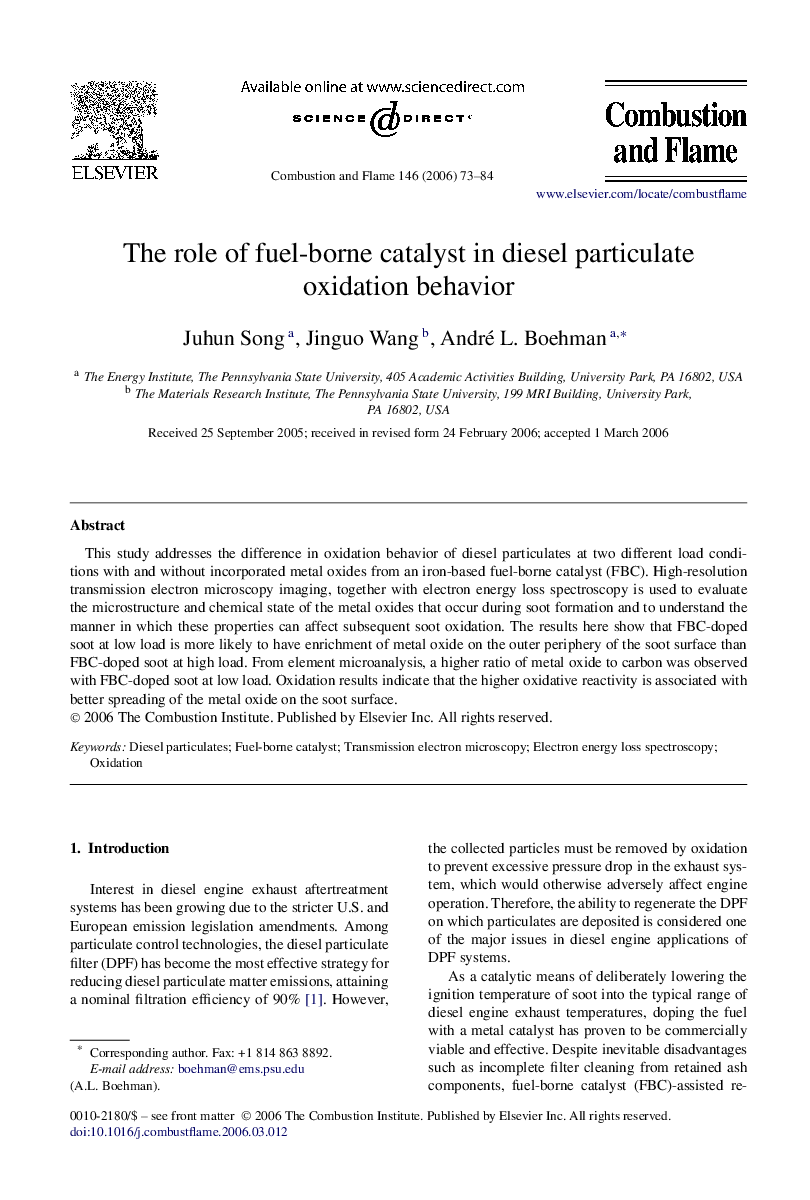| Article ID | Journal | Published Year | Pages | File Type |
|---|---|---|---|---|
| 169905 | Combustion and Flame | 2006 | 12 Pages |
This study addresses the difference in oxidation behavior of diesel particulates at two different load conditions with and without incorporated metal oxides from an iron-based fuel-borne catalyst (FBC). High-resolution transmission electron microscopy imaging, together with electron energy loss spectroscopy is used to evaluate the microstructure and chemical state of the metal oxides that occur during soot formation and to understand the manner in which these properties can affect subsequent soot oxidation. The results here show that FBC-doped soot at low load is more likely to have enrichment of metal oxide on the outer periphery of the soot surface than FBC-doped soot at high load. From element microanalysis, a higher ratio of metal oxide to carbon was observed with FBC-doped soot at low load. Oxidation results indicate that the higher oxidative reactivity is associated with better spreading of the metal oxide on the soot surface.
